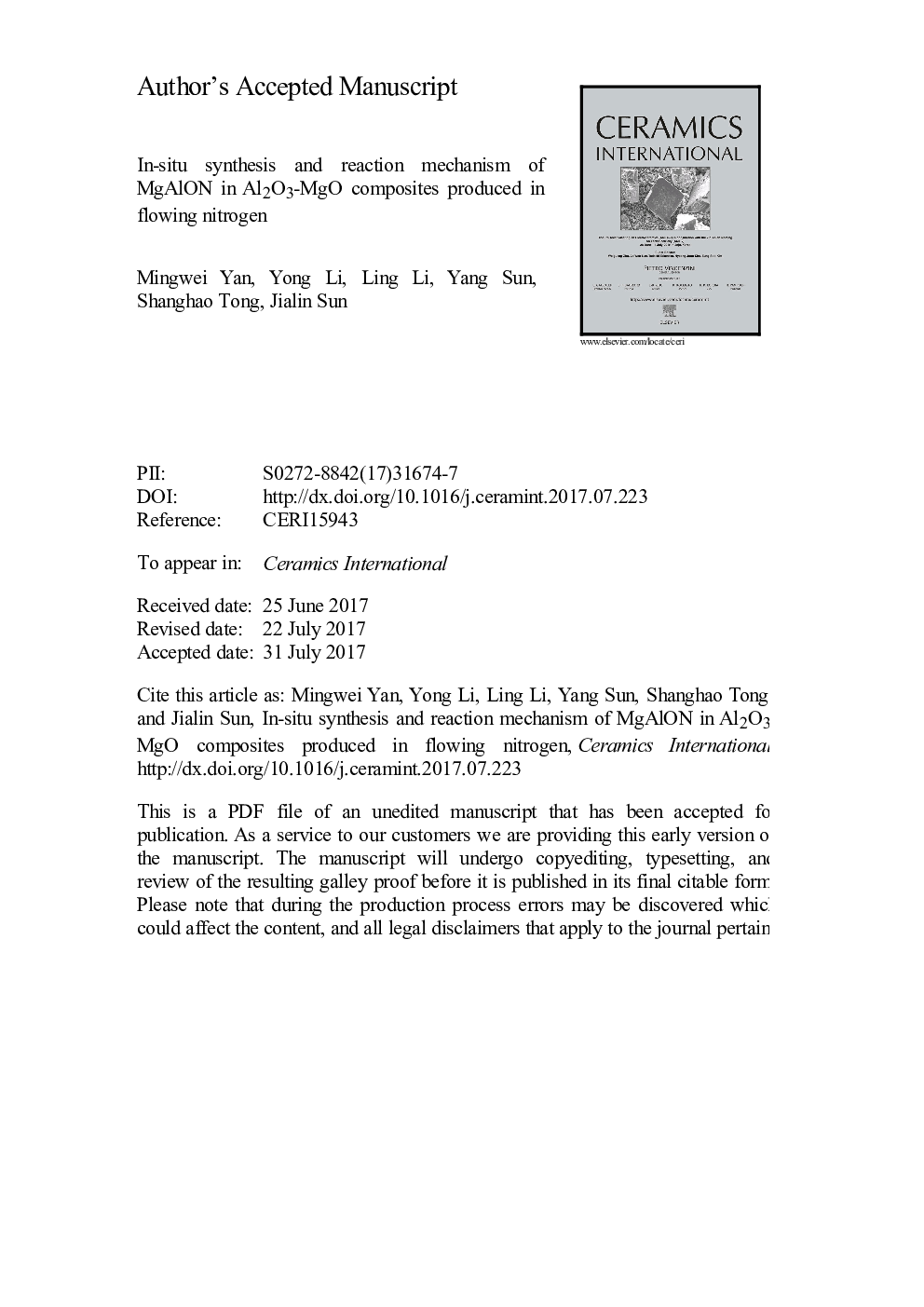| Article ID | Journal | Published Year | Pages | File Type |
|---|---|---|---|---|
| 5437359 | Ceramics International | 2017 | 17 Pages |
Abstract
Al2O3-MgO composites were calcined in flowing nitrogen at 1700 and 1800 °C. The calcined Al2O3 grains and powders were in-situ transformed into MgAlON and Al2O3 grains showed numerous transgranular pores due to the decomposition of impurities such as SiO2, Fe2O3, and Na2O. The reaction mechanism of MgAlON was described as follows. Al2O3 reacted with MgO with increasing temperature above 1000 °C to form MgAl2O4 and was further transformed into Al2O3-rich spinel according to the reaction Al2O3â¶MgOâ
Al2O32AlMg
- +VMgâ²â²+3OO. MgO became unstable and decomposed into Mg (g) and O2 (g) owing to the oxygen consumed according to the C-O2 reaction, and Mg (g) diffused and transferred along pores or gaps in the material, reacting with Al2O3 grains and powders or Al2O3-rich spinel to form spinel and Al (g). Al (g) was then nitrided into AlN, which dissolved into the spinel thus forming MgAlON.
- +VMgâ²â²+3OO. MgO became unstable and decomposed into Mg (g) and O2 (g) owing to the oxygen consumed according to the C-O2 reaction, and Mg (g) diffused and transferred along pores or gaps in the material, reacting with Al2O3 grains and powders or Al2O3-rich spinel to form spinel and Al (g). Al (g) was then nitrided into AlN, which dissolved into the spinel thus forming MgAlON.
Related Topics
Physical Sciences and Engineering
Materials Science
Ceramics and Composites
Authors
Mingwei Yan, Yong Li, Ling Li, Yang Sun, Shanghao Tong, Jialin Sun,
